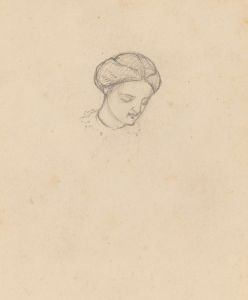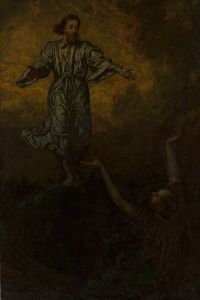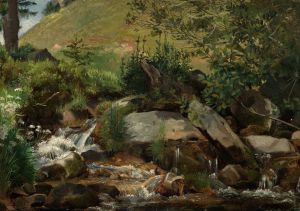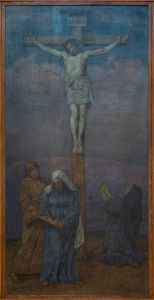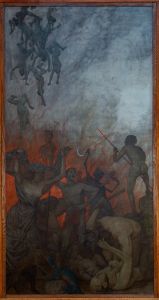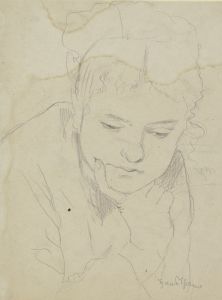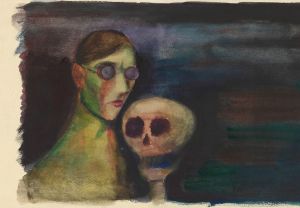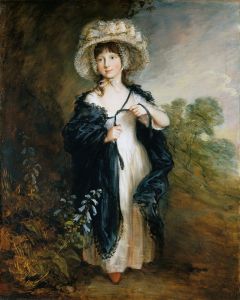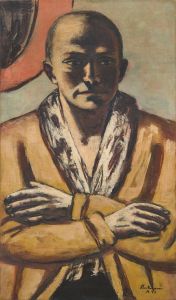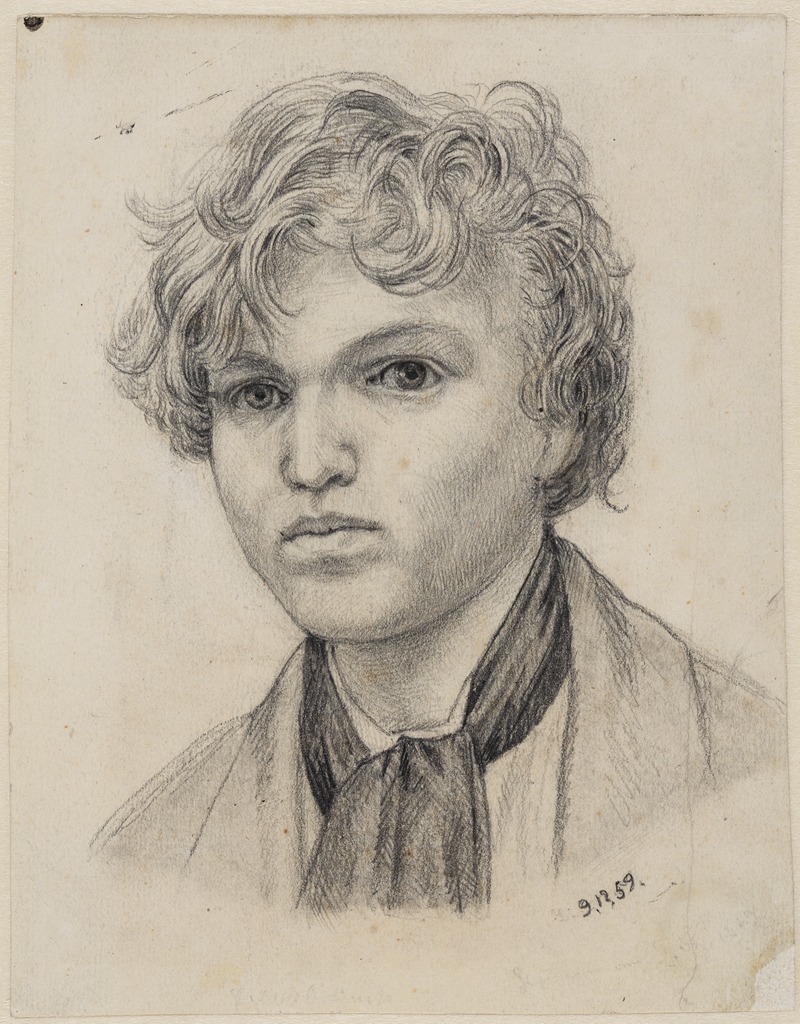
Jugendliches Selbstbildnis
A hand-painted replica of Hans Thoma’s masterpiece Jugendliches Selbstbildnis, meticulously crafted by professional artists to capture the true essence of the original. Each piece is created with museum-quality canvas and rare mineral pigments, carefully painted by experienced artists with delicate brushstrokes and rich, layered colors to perfectly recreate the texture of the original artwork. Unlike machine-printed reproductions, this hand-painted version brings the painting to life, infused with the artist’s emotions and skill in every stroke. Whether for personal collection or home decoration, it instantly elevates the artistic atmosphere of any space.
Hans Thoma's Jugendliches Selbstbildnis (translated as Youthful Self-Portrait) is a self-portrait created by the German painter Hans Thoma (1839–1924). Thoma was a prominent figure in 19th-century German art, known for his landscapes, portraits, and genre paintings that often reflected a blend of Romanticism and Realism. This particular work, as the title suggests, depicts the artist during his youth, offering a glimpse into his early artistic style and self-perception.
The painting is believed to have been created during Thoma's formative years, possibly while he was studying art or shortly thereafter. Thoma trained at the Karlsruhe Academy of Fine Arts under Johann Wilhelm Schirmer and later spent time in Düsseldorf, Paris, and Munich, where he was influenced by various artistic movements and mentors. Jugendliches Selbstbildnis reflects the introspective nature of self-portraiture, a genre that allows artists to explore their identity and artistic development.
In this self-portrait, Thoma presents himself with a direct gaze, a common feature in self-portraits that establishes a connection between the artist and the viewer. The work demonstrates his early mastery of detail and composition, as well as his interest in capturing the human figure with a sense of realism. The painting also provides insight into the cultural and artistic environment of 19th-century Germany, where self-portraiture was a popular means for artists to assert their individuality and document their personal and professional journeys.
Hans Thoma's broader body of work often drew inspiration from his rural upbringing in the Black Forest region of Germany. While Jugendliches Selbstbildnis focuses on the artist himself, many of his later works incorporated elements of nature, folklore, and mythology, reflecting his deep connection to his homeland and its traditions.
The current location of Jugendliches Selbstbildnis is not widely documented, and specific details about its creation, such as the exact year or medium used, are not readily available in public records. However, the painting remains an important example of Thoma's early exploration of self-representation and his evolving artistic style.
For further information about Hans Thoma and his works, including Jugendliches Selbstbildnis, additional research into museum collections or archives specializing in 19th-century German art may be required.





